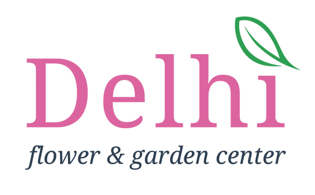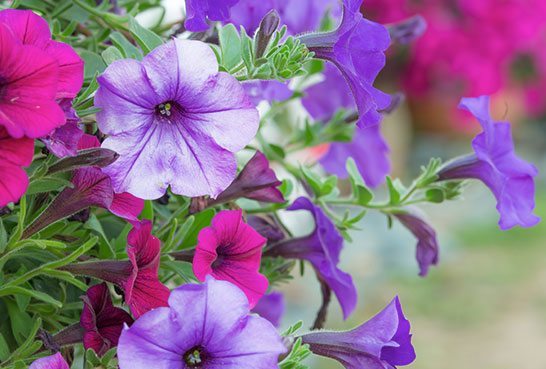Caring for Potted Annuals
For convenient, sophisticated bursts of color indoors or outdoors, for an event or for every day, potted annuals make excellent choices. To keep these prized items healthy and vibrant, establish effective watering, fertilizing, and deadheading routines. This way, your precious plants will look better and last longer, brightening as many of your days as possible. Some steps will vary, depending on the type of annual involved. When in doubt, contact your garden center, where experts are happy to help.
Watering
Appropriate watering routines differ from plant to plant because certain varieties have certain needs. Follow some basic guidelines to give yourself a head start. Busy gardeners tend to rush out of necessity, but try to be patient when watering. Pouring slowly gives soil enough time to soak up liquid. Be thorough by soaking the entire root mass from top to bottom. Rid container plants of any run-off; they don’t like having wet feet!
Fertilizing
A general purpose fertilizer can improve the health of most annuals and perennials. Certain plants, including tomatoes, roses, and acid-loving plants, require variety-specific fertilizer, however. When plants are fed food formulated for their individual needs, they receive the most advantageous proportion of vital nutrients and trace minerals. If you water more than three times per week, you should fertilize at least once per week. This rule doesn’t apply to every plant type, though, so double-check. For example, some of the newer vegetative annuals like petunias and calibrachoas can be fed every time they’re watered. You can supplement plants’ nutritional intake with a water-soluble fertilizer, which can be used after the application of general purpose and slow release fertilizers at the time of planting. It may seem counter-intuitive, but some flowers suffer when fertilized too often, so exercise caution. For instance, impatiens actually decrease flower production when involved in a heavy feeding program.
Deadheading
All flowers—even the so-called self-deadheading types—benefit from the removal of spent flowers. Regular deadheading promotes growth and bud development. Again, double-checking the type of plant in question is key; you’ll want to do some research before going forward with your deadheading routine, as different types require different techniques. Consider the varying routines recommended for the following varieties: geraniums and gerbera daisies need both spent flowers and stems removed, perennial daisies only have to have their blooms sheared back, roses require the five-leaf junction method when deadheading.



